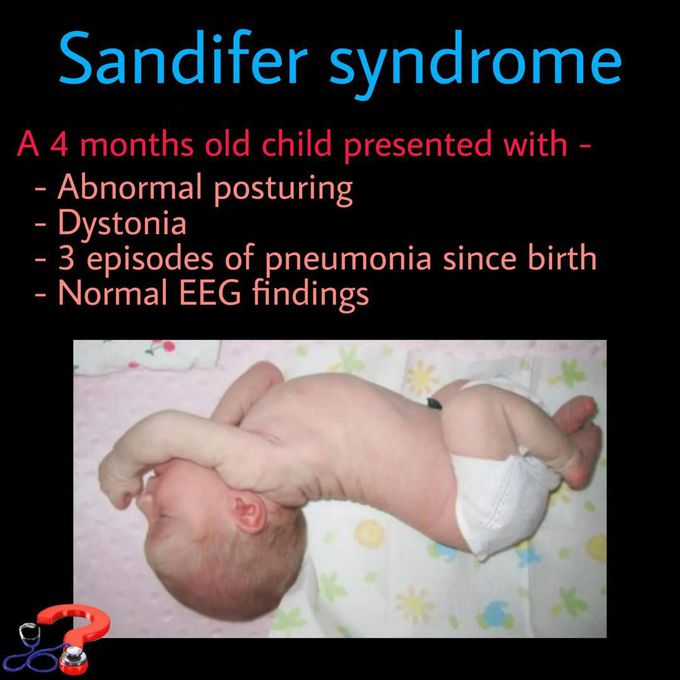


Sandifer syndrome
It is a sudden-onset dystonia that can involve various body parts: the neck and head are most commonly affected. ⏩This syndrome is more common in infants and children who have GERD or hiatal hernias. Patients may present with episodes of torticollis, laterocollis or retrocollis. Occasionally, arching of the back, opisthotonus-like positions, and eye deviations may be concurrently seen. ⏩The main SYMPTOMS of Sandifer syndrome are torticollis and dystonia. ✅Torticollis refers to involuntary movements of the neck. ✅Dystonia is a name for writhing and twisting motions due to uncontrollable muscle contractions. These movements often cause children to arch their backs. ⏩Additional symptoms of Sandifer syndrome and GERD include: ✅Head nodding ✅Gurgling sounds ✅Coughing ✅Trouble sleeping ✅Constant irritability ✅Poor weight gain ✅Choking ✅Breath-holding spells ✅Slow feeding ✅Recurrent pneumonia ⏩Dystonic episodes have been shown to be temporally associated with food intake,although intermittent episodes are frequently present. Characteristically absent during sleep and paroxysmal in nature, these episodes are frequently mistaken for seizures. ⏩The MECHANISMS that under- lie Sandifer syndrome still need to be defined. The etiological association with GERD is confirmed by the resolution of dystonia with anti-reflux therapy. ✅The involuntary dystonia is a physiological response that attempts to alleviate symptoms of GERD. ⏩Demonstration of GERD on pH measurement, impedance testing, or nuclear technetium scan or the presence of esophagitis on endoscopy may be helpful, even though a direct correlation with dystonic episodes may be difficult to prove. A neurological workup may help elicit the cause. ⏩RESOLUTION--either gradual or dramatic--following anti-reflux therapy confirms the diagnosis.Medical therapy is usually successful although a few cases responds well to fundoplication.
Source: https://www.instagram.com/p/CcqDJl6BHno/?igshid=YmMyMTA2M2Y=
